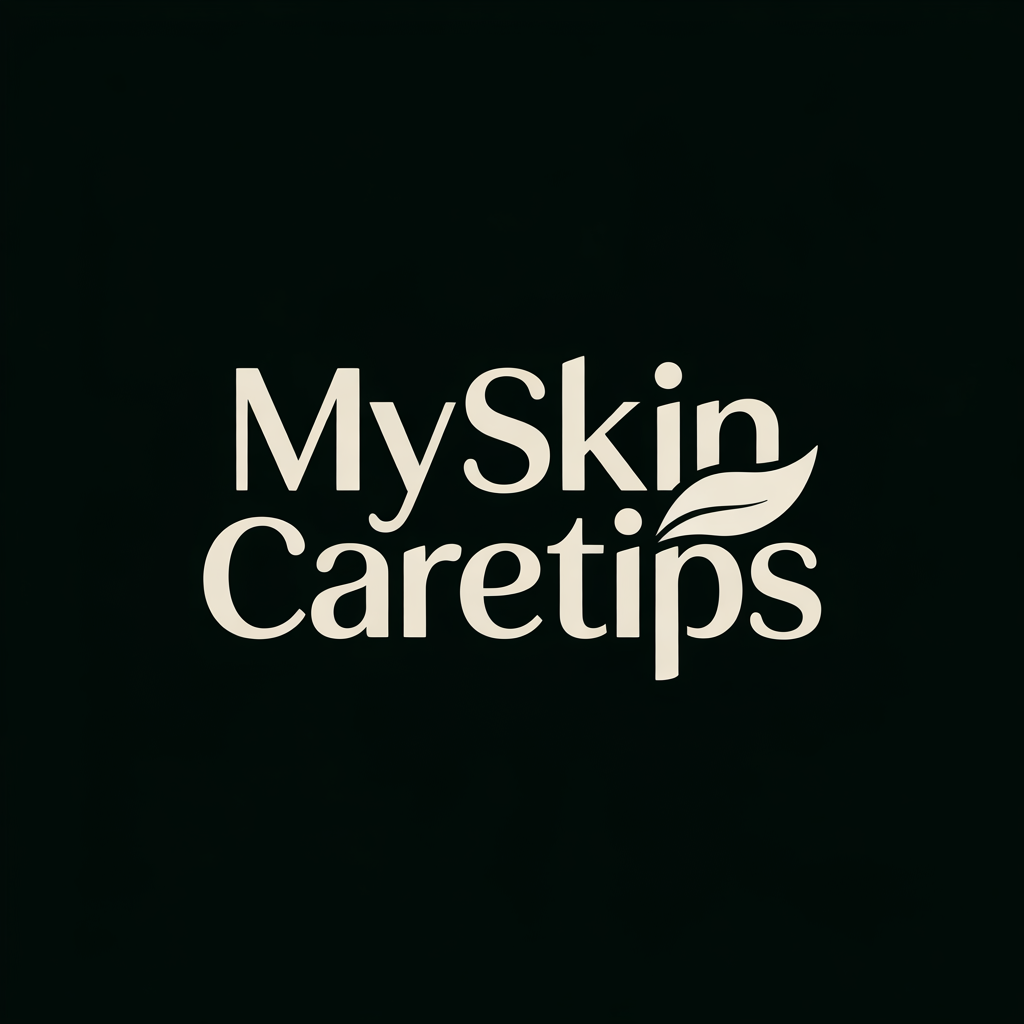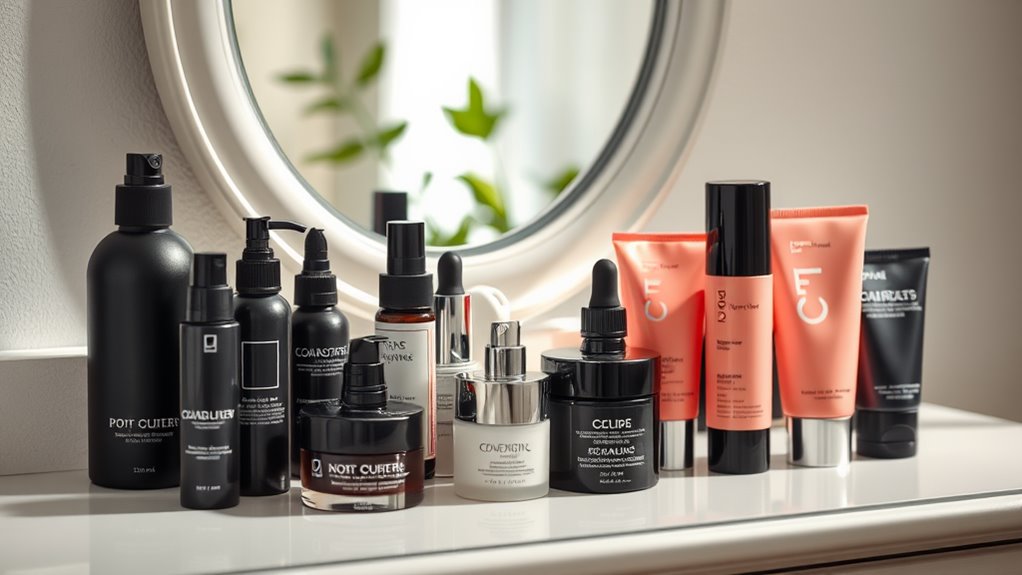Spot Treatments That Actually Work (And Ones to Skip)
For effective spot treatments, look for ingredients like benzoyl peroxide and salicylic acid—they target acne by fighting bacteria and unclogging pores. Natural remedies like diluted tea tree oil and aloe vera gel can also help. However, be cautious with popular treatments that often provide little benefit, such as pore-clearing strips or untested DIY methods. Follow proper application techniques to maximize effects and minimize irritation. To truly reveal the best strategies, explore further insights on combining treatments effectively.
Best Spot Treatments for Acne: What Really Works
Have you ever wondered which spot treatments really deliver on their promises to combat acne?
Effective spot treatments often contain active ingredients like benzoyl peroxide, salicylic acid, and sulfur.
Benzoyl peroxide works by killing acne-causing bacteria, while salicylic acid helps unclog pores and reduce inflammation.
Sulfur, on the other hand, absorbs excess oil and dries out blemishes.
Clinical studies support these ingredients’ efficacy, confirming they can reduce acne visibility within days, and effective acne solutions often involve a combination of these ingredients for optimal results.
When selecting a spot treatment, look for products with these proven ingredients for the best results.
Natural Remedies: Effective Alternatives
If you’re looking for natural alternatives to traditional spot treatments, consider options like tea tree oil, aloe vera gel, and honey masks. Each of these remedies has shown potential in reducing acne and promoting skin healing. Incorporating them into your skincare routine may offer effective results without harsh chemicals. Additionally, DIY face masks using common kitchen ingredients can also enhance your skincare regimen and provide nourishing benefits.
Tea Tree Oil
Tea tree oil, renowned for its potent antiseptic properties, serves as an effective natural remedy for treating blemishes and acne.
Research shows that it can greatly reduce inflammation and bacteria associated with acne.
To use it, dilute a few drops of tea tree oil with a carrier oil, like jojoba or coconut oil, and apply it directly to affected areas.
You’ll find that this treatment can help minimize redness and speed up healing.
However, be cautious, as some individuals may experience irritation.
Always perform a patch test before widespread application to confirm it’s suitable for your skin type.
Aloe Vera Gel
Aloe vera gel is a powerful ally in the fight against acne and skin irritation.
Rich in anti-inflammatory properties, it soothes redness and reduces swelling, helping your skin heal faster.
Studies show that aloe vera can inhibit the growth of acne-causing bacteria, making it an effective spot treatment.
Its natural moisturizing properties prevent dryness, ensuring your skin retains its hydration.
To use, apply a thin layer directly onto affected areas and let it absorb.
You can use it daily without irritation, making it a great addition to your skincare routine for clearer, healthier skin.
Honey Mask
A honey mask is an excellent natural remedy for addressing acne and promoting skin health.
It’s packed with antibacterial properties that can help reduce inflammation and heal blemishes.
Plus, it hydrates and soothes your skin.
- Contains antioxidants that combat free radicals
- Provides natural hydration, improving skin texture
- Promotes wound healing and reduces scarring
To use, apply a thin layer of raw honey on clean skin, leave it on for 15-20 minutes, then rinse with warm water.
Regular use can lead to clearer, healthier skin without harsh chemicals.
Give it a try for effective results!
Ingredients to Look For in Spot Treatments
When selecting spot treatments, it’s vital to focus on specific ingredients known for their effectiveness in targeting blemishes.
Look for salicylic acid, which penetrates pores to reduce inflammation and unclog them. Benzoyl peroxide is another option, effectively killing acne-causing bacteria. If you prefer natural ingredients, tea tree oil has antimicrobial properties that can help reduce redness. Additionally, niacinamide can soothe irritation and improve skin texture. Finally, sulfur can absorb excess oil and reduce breakouts. Incorporating key ingredients into your skincare routine can significantly improve acne-prone skin.
Always patch-test new products and consult a dermatologist if you have severe acne or persistent skin issues to guarantee the right treatment for your skin type.
Popular Treatments That Fall Short
Many widely advertised spot treatments can disappoint, failing to deliver on their promises. It’s important to be cautious and informed about the products you choose. Here are three popular treatments that often fall short:
- Pore-clearing strips: While they can remove surface debris, they don’t address deeper acne issues.
- Over-the-counter benzoyl peroxide: This ingredient can be effective for some, but many formulations are too harsh and lead to irritation.
- Tea tree oil: Though touted as natural, studies show inconsistent results, and it can cause allergic reactions in some users.
Additionally, DIY acne treatments have mixed effectiveness, so it’s crucial to evaluate options carefully. Opt for evidence-based solutions for better results.
How to Use Spot Treatments Effectively
Understanding how to use spot treatments effectively can make a significant difference in managing breakouts.
First, cleanse your skin gently, ensuring it’s free of dirt and oil.
Apply a small amount of the treatment directly onto the blemish, avoiding surrounding skin to reduce irritation.
Allow the product to dry completely before applying other skincare or makeup.
Use spot treatments only as needed, not continuously, to prevent over-drying.
Be patient; results often take time.
Finally, remember to follow up with a non-comedogenic moisturizer to maintain skin balance and hydration, promoting overall skin health while targeting specific breakouts. Additionally, incorporating an effective routine can enhance the results of spot treatments and improve overall skin clarity.
Combining Treatments for Maximum Results
Combining treatments can yield maximum results when done correctly.
Here are three strategies to evaluate:
- Layer Active Ingredients: Use products with complementary ingredients like salicylic acid and benzoyl peroxide for targeted action.
- Timing Matters: Apply treatments in the right order—thinner, water-based products first, followed by thicker creams.
- Patch Test New Combinations: Always test new combinations on a small area to avoid irritation.
Additionally, consider incorporating proper skincare layering techniques to enhance product absorption and efficacy.

